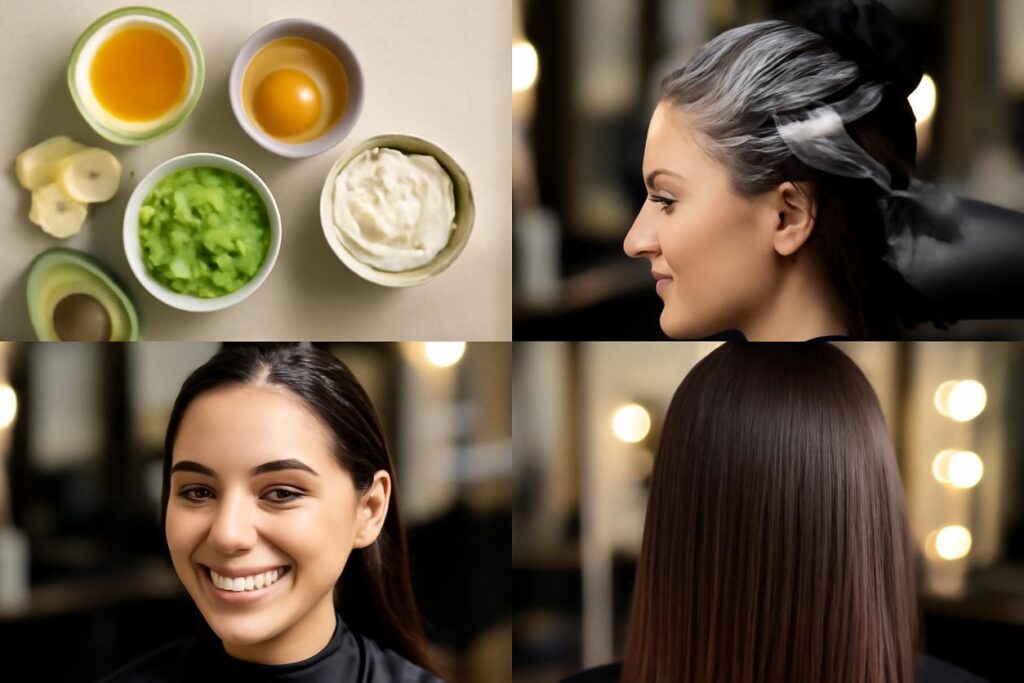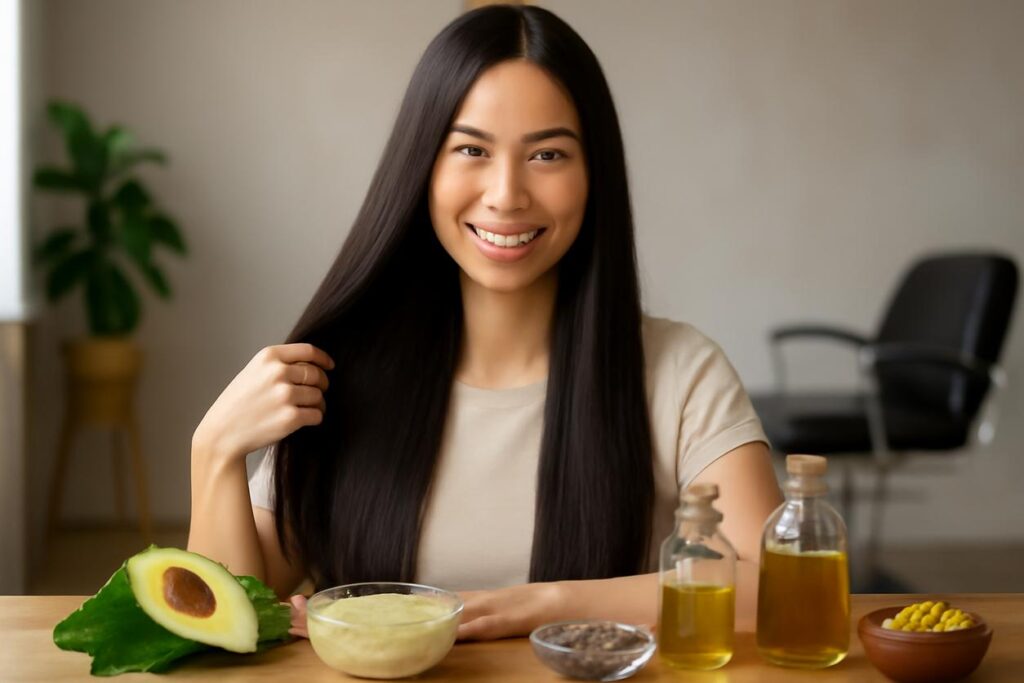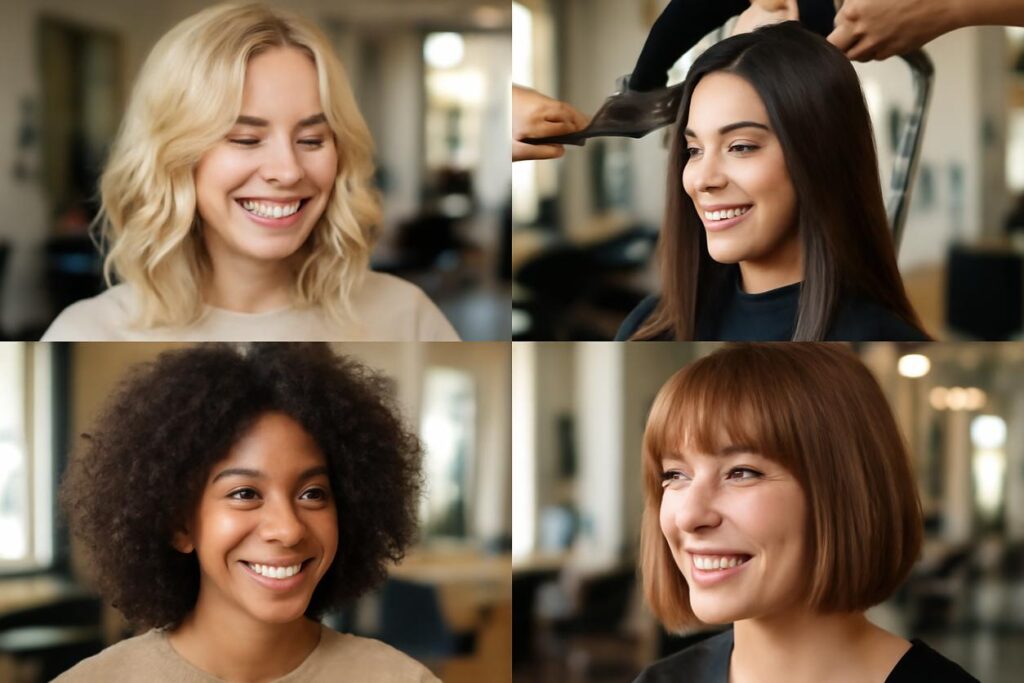Table of Contents
- Why nutrition matters for curly hair
- How curl pattern and porosity influence dietary needs
- The building blocks: nutrients that support curl strength and shine
- Food first: simple meals that benefit curls
- Sample 7 day meal blueprint by curl profile
- Supplements: sensible uses and safety notes
- Practical habits to lock in gains without major lifestyle disruption
- Small experiments and quick wins to test results
- Frequently asked questions about diet and curls
- Further reading and trusted research sources
Why nutrition matters for curly hair
You’ve mastered the art of plopping, found your holy grail leave-in conditioner, and can scrunch out the crunch in your sleep. But what if the secret to your most vibrant, defined, and healthy curls isn’t in a bottle, but on your plate? Welcome to the world of curly hair nutrition, a foundational approach to haircare that starts from the inside out. Your hair is, quite literally, built from the nutrients you consume. The protein, fats, vitamins, and minerals in your diet form the very structure of each strand.
For those blessed with curls, coils, and waves, this internal approach is even more critical. The unique shape of curly hair strands means the natural oils from your scalp have a harder time traveling down the hair shaft. This often leads to dryness, frizz, and breakage. A targeted diet can help fortify your hair from the root, improve moisture retention, and build resilience against damage. Think of it as feeding your follicles the premium fuel they need to produce strong, luscious curls.
How curl pattern and porosity influence dietary needs
While all curls benefit from a balanced diet, understanding your specific hair type can help you fine-tune your nutritional strategy. Your curl pattern (from loose waves to tight coils) is one factor, but an even more influential characteristic is your hair’s porosity. Porosity determines how well your hair absorbs and retains moisture, and it directly impacts what nutritional support it needs most.
Quick self-test for porosity and what it means for nutrition
Not sure about your hair’s porosity? Try this simple test. Take a clean, product-free strand of shed hair and drop it into a glass of room temperature water.
- Low Porosity: If the strand floats for a long time, you likely have low porosity hair. Your hair cuticles are tightly packed, making it hard for moisture to get in. You’re prone to product buildup.
- Medium Porosity: If the strand floats for a bit before slowly sinking, you have medium or “normal” porosity. Your hair accepts and retains moisture well.
- High Porosity: If the strand sinks quickly, you have high porosity hair. Your cuticles have gaps and are wide open, so your hair absorbs moisture easily but loses it just as fast. This can be genetic or a result of damage.
Here’s what this means for your curly hair nutrition plan:
- Low Porosity Nutrition: Focus on hydration from water-rich foods like cucumber, celery, and watermelon. Avoid overloading on heavy fats that can weigh hair down. Lean proteins like fish and chicken are excellent.
- High Porosity Nutrition: You need to fill in the gaps in your hair cuticle and seal in moisture. Prioritize protein-rich foods like eggs, lentils, and Greek yogurt to repair and strengthen. Healthy fats from sources like avocado, nuts, and olive oil are crucial for sealing the cuticle and preventing moisture loss.
The building blocks: nutrients that support curl strength and shine
Regardless of your curl type, certain nutrients are non-negotiable for healthy hair growth. A balanced intake of these key building blocks is the cornerstone of any effective curly hair nutrition strategy.
Protein and curl structure
Hair is primarily made of a protein called keratin. Insufficient protein in your diet can lead to weak, brittle hair that struggles to hold its curl pattern. Ensuring you eat enough protein gives your body the raw materials to build strong strands from the follicle up.
- Top Sources: Lean meats (chicken, turkey), fatty fish (salmon, mackerel), eggs, Greek yogurt, lentils, chickpeas, tofu, and quinoa.
Healthy fats for moisture retention
Essential fatty acids, particularly Omega-3s, are vital for maintaining a healthy scalp and producing the natural sebum that moisturizes your hair. They help add shine, elasticity, and prevent a dry, flaky scalp which can inhibit healthy growth.
- Top Sources: Avocados, nuts (walnuts, almonds), seeds (flaxseeds, chia seeds), olive oil, and fatty fish like salmon.
Vitamins and minerals for scalp and follicle health
A host of micronutrients plays a supporting role in the hair growth cycle, from creating new follicles to delivering oxygen to the scalp.
- Iron: Essential for producing hemoglobin, which carries oxygen to your cells, including the ones that stimulate hair growth. Iron deficiency is a major cause of hair shedding. Find it in spinach, lentils, red meat, and fortified cereals.
- Zinc: This mineral plays a crucial role in hair tissue growth and repair. It also helps keep the oil glands around the follicles working properly. Pumpkin seeds, chickpeas, and beef are great sources.
- Vitamin C: A powerful antioxidant that helps protect against damage and is necessary for creating collagen, a protein that strengthens hair. It also helps your body absorb iron. Load up on citrus fruits, bell peppers, strawberries, and broccoli.
- Biotin (Vitamin B7): Famous for its role in hair health, biotin assists in the production of keratin. While deficiency is rare, ensuring adequate intake is wise. Find it in eggs, almonds, salmon, and sweet potatoes.
- Vitamin E: This antioxidant helps prevent oxidative stress on the scalp. Sunflower seeds, almonds, and avocados are packed with Vitamin E.
Food first: simple meals that benefit curls
Building a diet that supports your hair doesn’t have to be complicated. Focusing on whole, nutrient-dense foods is the most effective approach to curly hair nutrition. Here are some simple ideas to get you started.
Breakfasts to support hydration and keratin production
Start your day with a meal that provides protein, healthy fats, and vitamins to fuel your follicles.
- The Protein Power Bowl: Greek yogurt topped with a handful of berries (for Vitamin C), a sprinkle of flaxseeds (for Omega-3s), and a few almonds (for Vitamin E and Biotin).
- The Savory Scramble: Two eggs scrambled with a cup of spinach (for iron) and a side of avocado toast on whole-grain bread.
- Hydrating Oatmeal: A bowl of oatmeal made with milk or a fortified alternative, topped with walnuts and sliced bananas.
Smoothies and snacks for on the go curl care
Snack smart to keep your nutrient levels steady throughout the day.
- Green Curl Smoothie: Blend a large handful of spinach, half an avocado, a scoop of protein powder or chia seeds, and a cup of almond milk for a nutrient-packed drink.
- Smart Snacking: Swap out chips and cookies for snacks that serve your curls. A handful of walnuts, an apple with almond butter, or a hard-boiled egg are excellent choices.
Sample 7 day meal blueprint by curl profile
Here’s a sample blueprint for how you might tailor your meals based on porosity. This is a guide to inspire your choices, not a rigid diet plan. Remember to drink plenty of water throughout the day, regardless of your hair type!
| Meal | Low Porosity Focus (Hydration and Lean Protein) | High Porosity Focus (Repairing Protein and Sealing Fats) |
|---|---|---|
| Breakfast | Oatmeal with berries and a few seeds. | Scrambled eggs with spinach and a side of avocado. |
| Lunch | Large salad with grilled chicken, cucumber, tomatoes, and a light vinaigrette. | Quinoa bowl with black beans, corn, avocado, and salmon. |
| Dinner | Baked cod with roasted asparagus and brown rice. | Lentil soup with a side of whole-grain bread and butter. |
| Snack | Apple slices or a handful of grapes. | A handful of walnuts or Greek yogurt. |
Supplements: sensible uses and safety notes
While a food-first approach is always best, supplements can help fill nutritional gaps. However, more is not always better. High doses of certain vitamins can be harmful, and a supplement won’t fix a poor diet.
Before starting any new supplement regimen in 2025 or beyond, it is crucial to consult with a healthcare professional or a registered dietitian. They can run blood tests to check for deficiencies (like iron or Vitamin D) and recommend safe, effective dosages. Be wary of “hair growth” gummies that are often high in sugar and low in effective nutrient levels. A high-quality multivitamin or a targeted supplement prescribed by a doctor is a much safer bet.
Practical habits to lock in gains without major lifestyle disruption
Adopting a curly hair nutrition mindset doesn’t require a complete life overhaul. Small, consistent habits make the biggest difference over time.
- Hydrate Intelligently: Carry a reusable water bottle everywhere. Your hair, skin, and body will thank you.
- Plan for Protein: Ensure every meal contains a source of protein to keep you full and provide your hair with a steady supply of building blocks.
- Swap Your Snack: Identify one “less healthy” snack you eat regularly and swap it for a hair-friendly option like nuts, seeds, or fruit.
- Add Greens: Make it a goal to add a handful of leafy greens like spinach or kale to at least one meal per day. It’s an easy way to boost your iron and vitamin intake.
Small experiments and quick wins to test results
Since hair grows slowly, you won’t see changes overnight. Be patient! The average hair growth cycle means it can take 3-6 months to see noticeable results from dietary changes in your new growth.
To stay motivated, try a small experiment. For the next 30 days, focus on one specific goal, such as eating a protein-rich breakfast every day or adding a tablespoon of flaxseeds to your lunch. Take a photo of your hair on day one (in consistent lighting) and another on day 30. While your hair won’t have transformed, you might notice subtle improvements in shine, feel, or scalp health that encourage you to continue.
Frequently asked questions about diet and curls
How long does it take for curly hair nutrition to work?
Patience is key. You are impacting the new hair growing from the follicle, not the hair that is already on your head. Most people begin to notice a difference in their new growth, scalp health, and overall hair resilience within 3 to 6 months of consistent dietary improvements.
Can drinking more water really make my curls less dry?
Absolutely. Hydration starts from within. While water won’t magically hydrate the ends of your hair, it’s essential for overall cellular function, including that of your hair follicles. A well-hydrated body supports a healthy scalp and can improve the quality of the hair that grows from it.
Is there one “superfood” that will fix my curly hair?
No single food is a magic bullet. The strength of a good curly hair nutrition plan lies in balance and variety. A diet rich in a wide range of proteins, healthy fats, vitamins, and minerals will always be more effective than relying on one specific “superfood.”
Further reading and trusted research sources
For those who want to dive deeper into the science of hair and diet, these resources provide evidence-based information from trusted institutions.
- NIH Hair Nutrition Resources: For in-depth scientific studies and literature reviews on the links between specific nutrients and hair health, explore the National Institutes of Health’s database at https://www.ncbi.nlm.nih.gov.
- NHS Guidance on Diet and Healthy Hair: The UK’s National Health Service offers practical, public-facing advice on eating for overall wellness, including hair health. You can find their guidance at https://www.nhs.uk/live-well/eat-well.
- PubMed Reviews on Hair Nutrition: A vast repository of biomedical literature, PubMed is an excellent source for finding peer-reviewed research on hair loss and nutrition. Start your search at https://pubmed.ncbi.nlm.nih.gov.






